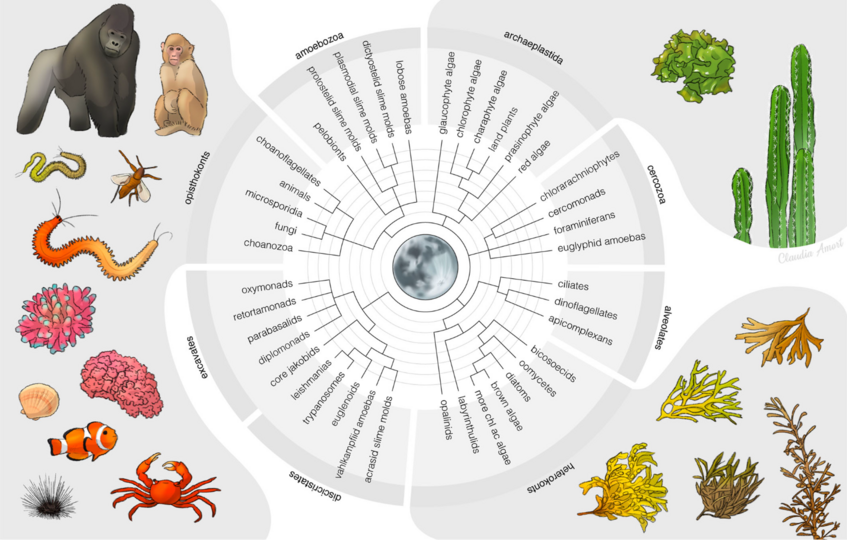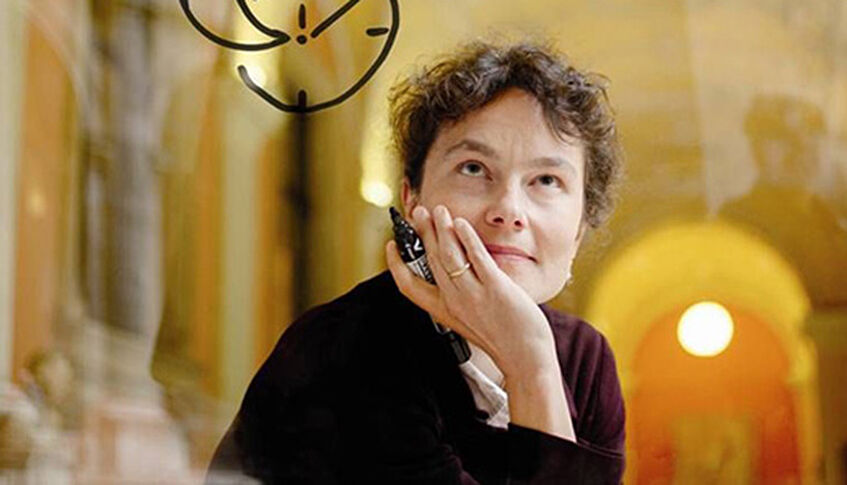
Prof. Kristin Tessmar-Raible
Decoding Time information from sun and moon
Chronobiology
Biology of light and photoreceptors
Evolution
SFB F78 Neural Stem Cell Modulation
Alfred-Wegener Institute, Section of Polar and Marine Research
Marine Chronobiology at University of Oldenburg
Lab news on our Bluesky profile
Decoding Time Information from Sun and Moon
Since its beginnings, life has been exposed to the regular environmental cycles caused by sun and moon, requiring adjustments of physiology and behavior. While sun(light)-dependent chronobiology has been studied in great detail, moonlight has been largely neglected for its role on animals. Especially for the marine environment – considered to be the cradle of evolution – a rich body of literature describes endogenous organismal rhythms that are not linked to the solar, but to the lunar cycle. These rhythms have considerable impact, ranging from behavioral and physiological control to ecosystem organization. As the origin of circalunar timing mechanisms likely predates the conquest of land, the underlying molecular oscillators might still be involved in physiological and behavioral cycles of several terrestrial animals, including birds and humans.
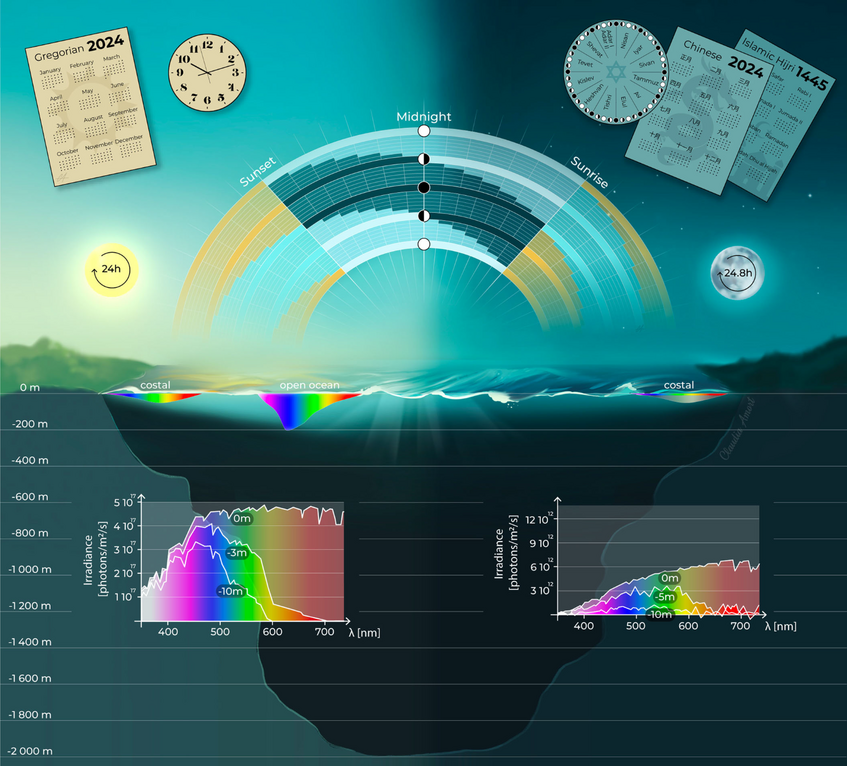
Sun and moon provide time information for human cultures and biological systems in their natural environment. Artwork by Claudia Amort. See Ritter and Tessmar-Raible EMBO Rep (2024) 25: 3169 - 3176 doi.org/10.1038/s44319-024-00196-5
Biological Oscillators and Rhythms
Our work focusses on the molecular mechanisms of moon-controlled timing systems and their interactions with the well-studied circadian clock. In many marine organisms, like the bristle worm Platynereis dumerillii (s.b.), moonlight does not only impact as a direct environmental stimulus, but sets the phase of an endogenous monthly oscillator. Despite the fundamental nature and widespread occurrence of lunar-controlled rhythms, little is known about their molecular mechanisms, their interplay with rhythms and oscillators of different period lengths, and their modulation in changing environments. Some recent question we have been tackling are: How can different worms across a population reliably synchronize to the same moon phase? How can animals recognize specific moon phases? How does lunar timing influence daily timing? How does nature build a monthly biological oscillator? And can the study of molecular timing mechanisms of marine bristle worms help to understand some of the scientifically reported, but “just weird” correlations between human physiological/behavioral rhythms and the lunar cycle?
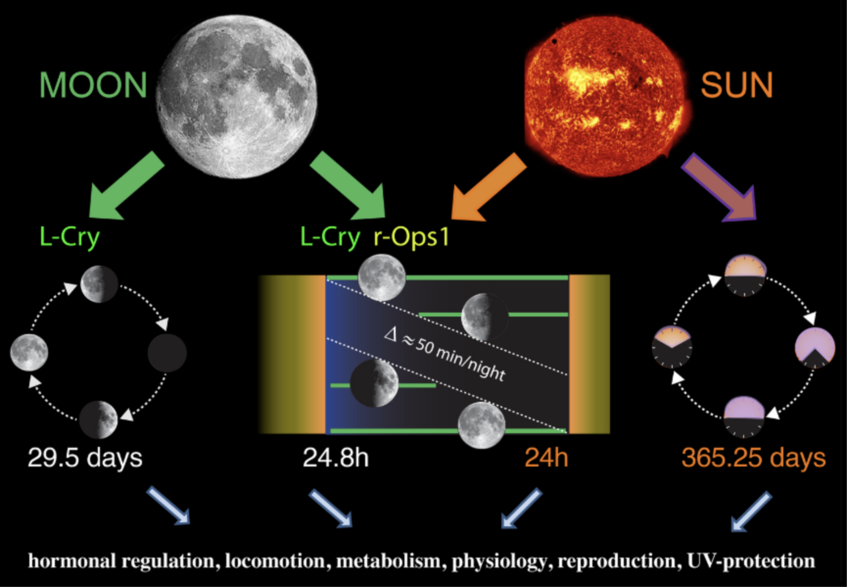
Dedicated molecular mechanisms decode light information provided by sun and moon to control physiology and behavior, often via the entrainment of endogenous oscillators running with the respective periodicity.
Platynereis dumerilii: Advancing a laboratory model system for moon-controlled timing and the impact of light on marine life
In order to uncover fundamental principles, such as the molecular and cellular mechanisms underlying lunar timing systems, research requires model systems that are well breedable in the lab and amenable to genetic functional tools. As no prominent, reproducible circalunar oscillator phenomenon has so far been uncovered in “conventional” molecular model species (mouse, zebrafish, fruitfly, nematodes), cracking the enigma of moon-controlled rhythms and oscillators requires the establishment of new model species.
The bristle worm Platynereis dumerilii was the first animal for which moon-phase correlated timing was demonstrated in lab conditions already in the 1950ies. We meanwhile know that lunar timing controls not just its reproductive development, but also strongly influences its overall physiology and behavior. Building on the classical work from the 1950ies, my lab has been pushing the development of tools for the understanding of lunar timing in this species. These tools range from reverse genetics, transgenesis, behavioral tracking and analyses to complex illumination set-ups mimicking the worms’ natural light environments.
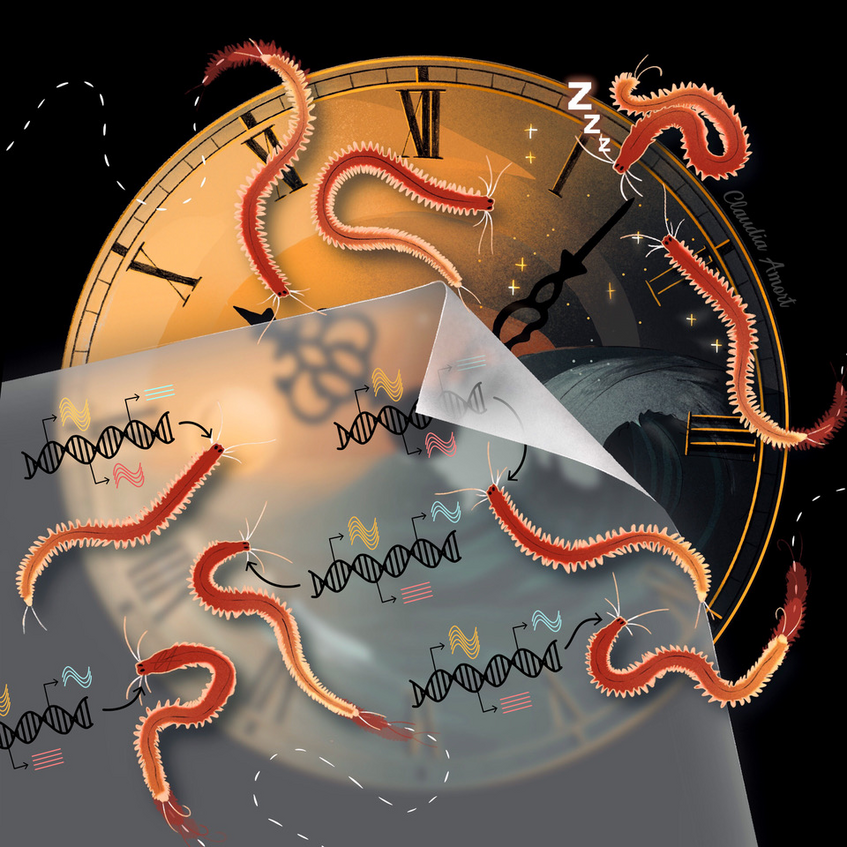
The bristleworm Platynereis dumerilii is a powerful laboratory model to dissect molecular mechanisms of light reception and timing systems. Artwork by Claudia Amort.
Direct roles of light and light receptors
Our interest in lunar and solar- controlled biological timing mechanisms is strongly connected to the understanding of the non-visual effects of light on animals. Whereas the perception of light is often most quickly associated with vision, it has become clear over the past decade that non-visual light receptors that also sense light are widespread in animals. In many cases their functions are not well understood. Using the bristle worm Platynereis dumerilii, but also other animal systems, especially fishes, we investigate the impact of light and its alterations on animals. This is of particular importance, given that changes to natural light conditions are among the strongest anthropogenic changes. This is both medically, but also ecologically relevant.
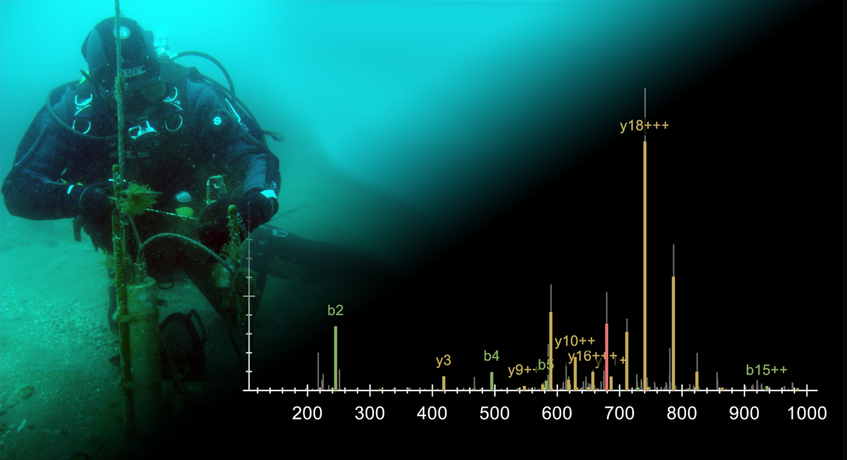
Environmental light has a multitude of effects on organisms, including the modulation of neuropeptides.
The importance of time: From the deep sea to humans
As an understanding of the impact and mechanisms underlying biological time and non-visual light perception is of relevance across ecosystems and animal phylogeny, the lab has several projects that involve other organisms. These projects are either anchored in the lab and driven by scientifically highly independent senior scientists or part of collaborative networks. Examples for those include:
- Understanding the biological timing of marine zooplankton, specifically Calanus finmarchicus: project leader Dr. Sören Häfker.
- Understanding the role and mechanisms of biological timing in the deep sea, with a specific focus on the mussel Bathymodiolus: project leader Dr. Audrey Mat; also part of an HFSP-funded collaboration project “Temporal structures in complex deep-sea versus surface marine life: from molecules to communities” (RGP021/2024)
- Understanding the role of light and time on mammalian stem cells and its interconnection to human sleep behavior and psychology: part of the special research programme (SFB) F78 “Stem Cell Modulation in Neural Development and Regeneration” and the Vienna Cognitive Science Hub.
